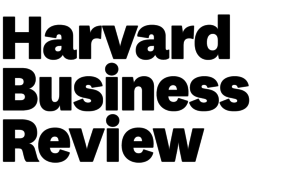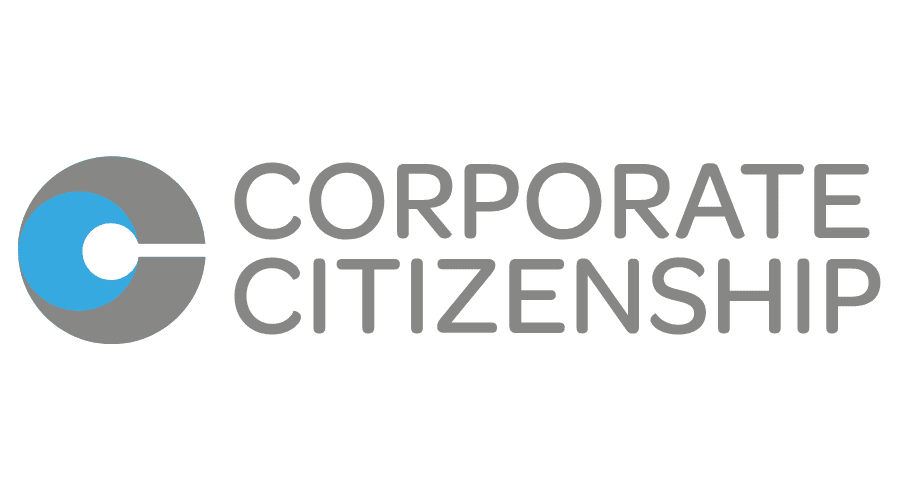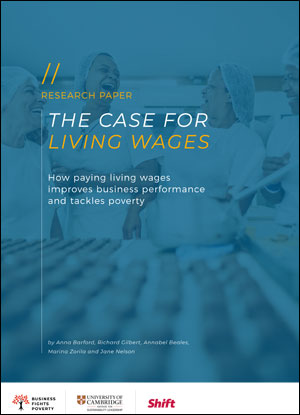Compensate
Description
These resources will help you to link compensation to the achievement of sustainability objectives, and includes providing compensation that is fair and does not contribute to further inequality in society.
Share this Practice on:LinkedIn
Resources
Executive Compensation
2023 Global Report on ESG Metrics in Executive Incentive Plans
This report written by WTW can help you understand trends in the use of ESG metrics in executive incentive plans. Based on public disclosures from over 1,000 companies around the world, the report outlines the most prevalent metrics used across ESG categories, such as how ESG is measured and incorporated into incentive plans. These insights can be useful to boards and compensation committees seeking to benchmark against executive incentive plans in different regions.
2024 Global Trends in Stakeholder Incentives: What's Next?
This report from Farient Advisors can help you to understand global trends by companies to incorporate stakeholder metrics into executive compensation. In conjunction with the Global Governance and Executive Compensation (GECN) Group, the report analyses data from the most recent public disclosures of 500+ companies. It provides key insights into the use of ESG incentives for executives, as well as actions that directors can take to advance the maturity of ESG incentive plans.
Put your money where your values are
Businesses are facing increasing pressure from investors, regulators, and advisers to incentivise performance on environmental, social, and governance issues. This short article from IR Magazine provides a look at efforts to link sustainability-related metrics to executive compensation in North America, Europe, and Asia. It provides example-centered recommendations and insights that will help you to understand emergent trends in executive compensation, as well as advice from corporate leaders.
Is it Time to Integrate EESG into Executive Compensation?
There is a growing number of shareholder resolutions requesting the adoption and disclosure of environmental, employee, social, and governance factors into executive compensation. This article will help you to understand why the inclusion of EESG criteria into executive compensation programs is an irreversible trend. It explores key obstacles and opportunities and how to navigate them, and provides advice from global directors and executives who have integrated - or are in the process of integrating - EESG into their compensation plans.
This resource is part of the Salzburg Questions for Corporate Governance series by the Salzburg Global Corporate Governance Forum, and was informed by insights from the Driving Accountability: Integrating EESG into executive compensation program.
How to Tie Executive Compensation to Sustainability
This short article will help you to understand how your organisation can better connect executive compensation with sustainability-related achievements. Instead of focusing on operational metrics, or on efforts far removed from your company's core mission, companies should reward executives for pursuing bold and strategically-aligned sustainable business opportunities.
Paying for net zero: Using incentives to create accountability for climate goals
This report was created to support boards that are considering including carbon targets in executive compensation. A collaboration between PwC and the Leadership Institute at London Business School, it examines whether current practices are meeting investor expectations, as well as the challenges and complexities of including carbon targets in compensation. The report finds that common gaps persist in relation to the degree of transparency of targets, as well as the clarity with which the targets are linked to public-facing decarbonisation goals. To address this issue, the report introduces a four-criteria rubric that can help you to establish credible links between executive compensation and your climate strategy.
Modern Principles for Sensible and Effective Executive Pay
This set of principle from the Aspen Institute will help ensure your organisation aligns executive pay with societal expectations. Specifically, it is written to guide boardroom dialogue on the topic. It includes clear criteria along with a list of key question for each of the five principles covered. This resource will be most useful to your board members and compensation committee.
Moving Cautiously on ESG Incentives in Compensation
Inquiry and action on how to link ESG metrics with executive compensation (and when) is growing, and this resource from Semler Brossey recommends that boards "move cautiously, but move." It highlights common questions and key steps in the process of linking metrics with compensation, and it can help you to understand what's driving ESG in incentives, including sector-driven strategies and calls for greater diversity, equity, and inclusion.
Making sustainability pay: company examples of ESG incentives
A growing number of companies are linking executive pay to sustainability metrics. This short article from Corporate Citizenship lists recent examples that show how industry leaders are leveraging bonuses and short- and long-term incentive plans to incentivize sustainability-related achievements.
Incentivizing What Matters: Designing Meaningful ESG Metrics for Executive Compensation
This guide from ISS Corporate Solutions can help you better understand the growing trend of ESG metrics in executive compensation. It starts by providing key statistics on the prevalence and type of ESG metrics being used across sectors and geographies. It then explains how materiality assessment priorities should inform the selection of executive compensations metrics. Finally, it provides a set of practical tips for designing, measuring, and disclosing ESG metrics linked to compensation. The guide will be most useful to sustainability teams involved in assessing materiality, and boards of directors and HR teams involved in setting executive compensation.
2024 Pay For Climate Performance Report: Linking CEO Compensation to Emissions Reduction
This report from As You Sow can help you understand best practice on linking GHG reduction targets to executive compensation. The report is based on a study of how 100 of the largest US companies factor climate metrics into CEO compensation, and it identifies common issues as well as best practices. These findings will be most useful to HR professionals, executive compensation committees, and sustainability teams.
Worker Compensation
The Platform Living Wage Financials (PLWF)
The Platform Living Wage Financials (PLWF) is a coalition of investors supporting the payment of living wages in their investee companies and associated value chains. Their work - including a living wage assessment methodology - can help your company measure and monitor progress on living wages across your operations and value chain. Their living wage assessment guidance document would be of particular benefit to sustainability and supply chain management teams tasked with supporting the implementation of living wages.
Global Living Wage Coalition
The Global Living Wage Coalition (GLWC) is a partnership between two independent networks with complementary missions and work: the Anker Living Wage and Income Research Institute (Anker Research Institute) and the GLWC Action Network (Action Network). They provide a comprehensive explanation of the Anker Methodology for measuring a living wage, and they have compiled a broad range of case studies for living wage implementation.
Living Wage Analysis Tool
The UN Global Compact has created this free tool to help you identify actions and further opportunities for your company to provide a living wage. The tool showcases good practices for ensuring a living wage in business operations and supply chains, and features questions based on real-life company practices and international standards and indicators. This tool is a good starting point for assessing current policies and programmes, highlighting areas for improvement, and identifying opportunities to set future corporate goals and targets.
The Living Income Community of Practice
The Living Income Community of Practice is a partnership between The Sustainable Food Lab, GIZ, and ISEAL. Their goal is to support activities that help smallholder farmers achieve a living income and a decent standard of living. The resources on this platform can help you to understand the difference between a living wage and a living income; understand and calculate living and actual incomes; and identify and discuss strategies for closing the income gap.
The Case for Living Wages: How Paying Living Wages Improves Business Performance and Tackles Poverty
Too many business continue to see living wages as a burden and challenge rather than an opportunity. This paper from Business Fights Poverty, CISL, and Shift explains the benefits that living wages provide to businesses and investors, including within core operations, value chains, and the wider operating environment. This resource can help you to better understand the need for a living wage (both for workers and firms), and features recommendations, key questions, and a five-step approach that can help your company to take action.
Roadmap on Living Wages
IDH, The Sustainable Trade Initiative, has created this platform to help you take tangible steps towards aligning your company's compensation with international living wage standards. The platform introduces a 5-step approach: identify the living wage; measure living wage gaps; verify calculations of gaps; close living wage gaps; and share learnings. For each step you will find primers, FAQs, and tools - such as benchmarks and auditor guidelines - to help you progress through the process.
Living Wage Accounting Model and Progress Tool
This tool from Shift and the Capitals Coalition was created to help you disclose your efforts to achieve a living wage for workers. Featuring three short guides, the tool provides a means to measure and articulate progress towards payment of a living wage for employees, contractors, and workers in the first tier of the supply chain.
Upholding the Human Right to a Living Wage is Essential for Business
In this blog post we explore the human right to a decent living to help you to understand why it is relevant for companies and how you can get started on your living wage journey.
Making credible living wage claims: A framework to guide practice
This guide developed by ISEAL can help you make credible living wage claims. The guide is divided into four parts; it reviews the fundamentals of making credible sustainability claims, outlines different types of living wage claims (e.g. claims based on commitment, action, or performance), provides step-by-step guidance on making a claim, and shares examples that further illustrate how to apply this guidance. This tool will be most useful to sustainability and supply chain practitioners seeking to take action on living wages, as well as communications and marketing teams involved in promoting sustainability claims.
A Living Wage Roadmap for Large Employers
This guide from Vancity explores their journey towards becoming a certified Living Wage Employer (LEW). It includes details of their 7-step process, identifies leads for spearheading each phase, and lays out the timeline for Vancity's LEW journey. The tangible and actionable content in this guide will especially benefit business leaders, change agents, and procurement personnel who are ready to advance from embracing LEW in principle to enacting it in practice.
Aligning Compensation: An investor brief on fair pay and income inequality
More attention needs to be paid to ensuring corporations recognize and reward the value provided by rest of the workforce. This brief from SHARE highlights how often employee performance is overlooked when considering the contributions that a well-compensated CEO provides. The report also looks at ways to elevate the place of the workforce within listed corporations so that boards, executives, and investors can ensure that employees are incentivised.
Living wage: An emerging standard
Although the subject of fair pay has received a marked increase in attention, few businesses have mature practices in place to ensure workers receive a living wage. This brief report by PwC and the WageIndicator Foundation can help you understand the challenges and opportunities related to paying a living wage at a global scale. Based on a survey of 205 participants from companies around the world, it covers the emerging expectation around living wages, key challenges, key drivers, associated trends, and next steps. This report will be most useful to sustainability and supply chain practitioners.
How to Pay Living Wages
This detailed case study from the Post Growth Guide can help you understand how to pay a living wage. The guide follows the methodology used by a company that makes beaded jewellery in Guatemala. Although the company is small, it provides a practical example of the process and key considerations that are broadly applicable at the manufacturing level. This includes how the company defines a living wage and how it calculates a piece rate living wage. This resource will be most useful to sustainability and supply chain management teams, especially those whose organisations make use of labour-intensive production in low wage regions.
Share this Practice on:LinkedIn






















